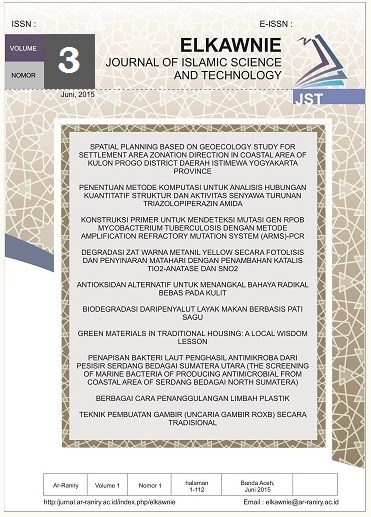Analisis Throughput Pada Sistem Komunikasi Mobile WIMAX HAPS
DOI:
https://doi.org/10.22373/ekw.v3i1.2754Keywords:
HAPS, user mobile wimax, throughputAbstract
HAPS (High Altitude Platform Station) is an airship or aircraft positioned 17-22 km altitude, or in stratosphere. HAPS is the development infrastructure of telecommunication network as BTS/BS replacement. BTS / BS is seen still has shortcomings in funding and capacity range. HAPS position is on the air layer will effected by wind disgusting so that position of HAPS will change form its normal state called Platform Displacement. Therefore, in this research, we will discuss the impact of HAPS displacement on the quality of service perceived MS (Mobile Station) by measuring the throughput. Throughput values will be mesured during MS is doing handover (HO) process, user is a mobile user who is doing WiMAX VoIP communications. Users will be simulated moves with constant speed of 50 km / h, 80 km / h, 120km / h and 200 km / h. Platform will simulated in some position upward, downward, to the right and to the left. When platform moves upward, cells will increase the coverage so each cell will interfere their neighbor especially when MS is doing HO processReferences
Al-Saedi, Firas Abdullah Thweny; Wafa A. Maddallah (2012):
Evaluation of Handover Process in WiMAX Networks.
Ashoka, Bhaskar; David Eyers; Zhiyi Huang (2011): handover
|
Delay in Mobile WiMAX: a Simulation Study, International
Conference on Parallel and Distributed Computing.
Fadilla, Siti Dara; Zulfajri B. Hasanuddin (2012): Handover
WiMAX pada Komunikasi Wireles, Jurnal Ilmiad Saintikom.
Ho, Kelvin; Titus Cheung; Glen Nogayev (2010): Evaluation of
Gaming Traffic over WiMAX, Final Project
Iskandar; K.Z. Arief (2010): Effect of HAPS Movement on the
Performance of Downlink Power Control CDMA System,
International Conference on Information Science, ISSP
th
Janevski, Toni (2012): Mobility Sensitive Algorithm for
Vertical Handovers from WiMAX to WLAN, 20
Telecommunications forum Telfor.
Kundu, Anindita (2010): Performance Evaluation of Integrated
WiMAX and WLAN Networks for Voice over IP Application,
Dissertation.
Linggar, Leopold (2010): Analisa Optimasi Tahapan Handover
Ntap dan Ahop pada Mobile Wimax (IEEE 802.16e) Untuk
Layanan VoD, Tesis, Program Pasca Sarjana, Universitas
Indonesia.
Masum, Ebna; Jewel Babu (2011): End-to-End Delay Performance
Evaluation for VoIP in the LTE Network, Thesis, Master of
Science Program, Blekinge Institute of Technology.
Mellyssa, Widdha.2013.Analisis Pengaruh Platform Displacement
Pada Kinerja Handover Sistem Komunikasi Mobile Wimax
Haps,Thesis, Master Teknik Institut Teknologi Bandung.
Mellyssa, Widdha.2015.Analisis Pengaruh Perubahan Posisi HAPS
terhadap Delay Handover Sistem Komunikasi Mobile
Wimax, CIRCUIT Journal, Universitas Islam Negeri ArRaniry.
Mohammed, Hasanain Ali; Prashant Pillai (2009): PerformanceEvaluation of a WiMAX Enabled HAPs-Staellite Hybrid
System.
Opnet Tutorial. Creating a Wireless Network, (diakses April 2013),
http://www.coe.montana.edu/ee/rwolff/EE548/EE548-S06/
OPNET%20stuff/tut_wireless.
Svensson, Tommy; Alex Popescu (2003) : Development of
Laboratory Exercises based on OPNET Modeler, Thesis,
Master Degree, Blekinge Institute of Technology.
Yang, Z.; D. Grace; P.D. Mitchell. Downlink Performance of
WiMAX Broadband from High Altitude Platform and
Terrestrial Deployments Sharing a Common 3.5 GHz Band
(diakses Mei 2013),
http://www.eurasip.org/Proceedings/Ext/IST05/papers
Yu,Yongxue (2009): Handover Performance in the Mobile WiMAX,
Graduate School Thesis and Dissertations, University of
South Florida.
Yusoff, Rohaiza; Mohd Dani Baba; Muhammad Ibrahim; Ruhani
Ab Rahman; Naimah Mat Isa (2012): Handover Behaviour
of Transparent Relay in WiMAX Networks, ACEEE Int. J.,
Vol. 03, No. 02.
Zavala, Alejandro Aragon; Jose Luis Cuevas-Ruiz; Jose
Antonio Delgado-Penin (2008), High Altitude Platform for
Wireless Communication, 1
st Edition, Wiley.
Downloads
Published
Issue
Section
License
Proposed Policy for Journals That Offer Open Access Authors who publish with the Elkawnie journal agree to the following terms:
a. Authors retain copyright and grant the journal right of first publication with the work simultaneously licensed under a Creative Commons Attribution License that allows others to share the work with an acknowledgement of the work's authorship and initial publication in this journal.
b. Authors are able to enter into separate, additional contractual arrangements for the non-exclusive distribution of the journal's published version of the work (e.g., post it to an institutional repository or publish it in a book), with an acknowledgement of its initial publication in this journal.
c. Authors are permitted and encouraged to post their work online (e.g., in institutional repositories or on their website) prior to and during the submission process, as it can lead to productive exchanges, as well as earlier and greater citation of published work (see The Effect of Open Access).

























